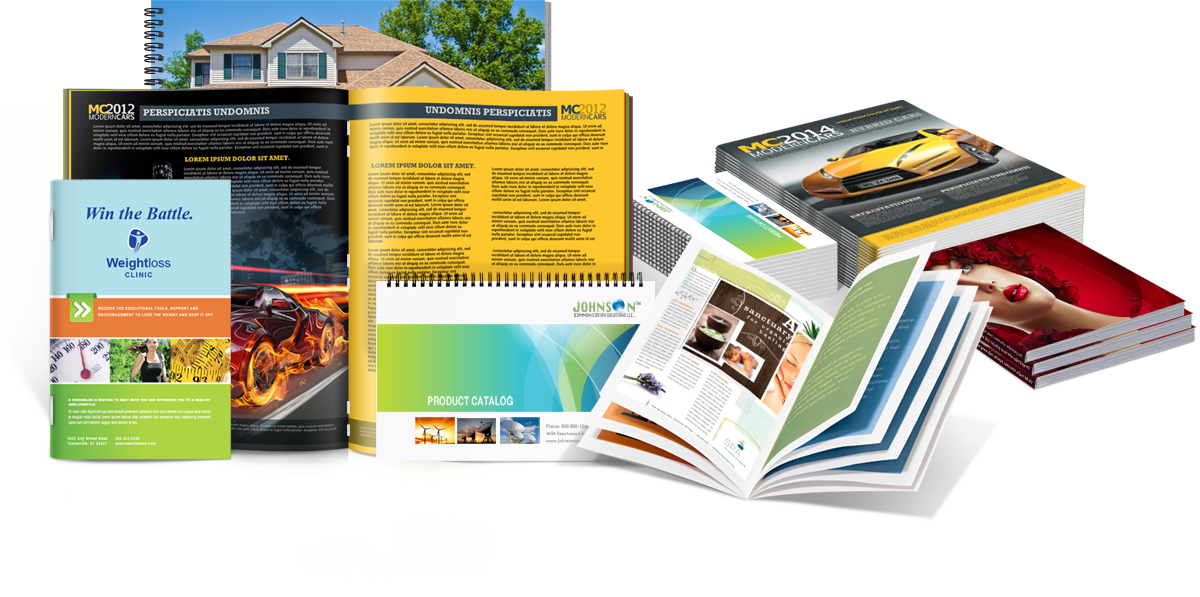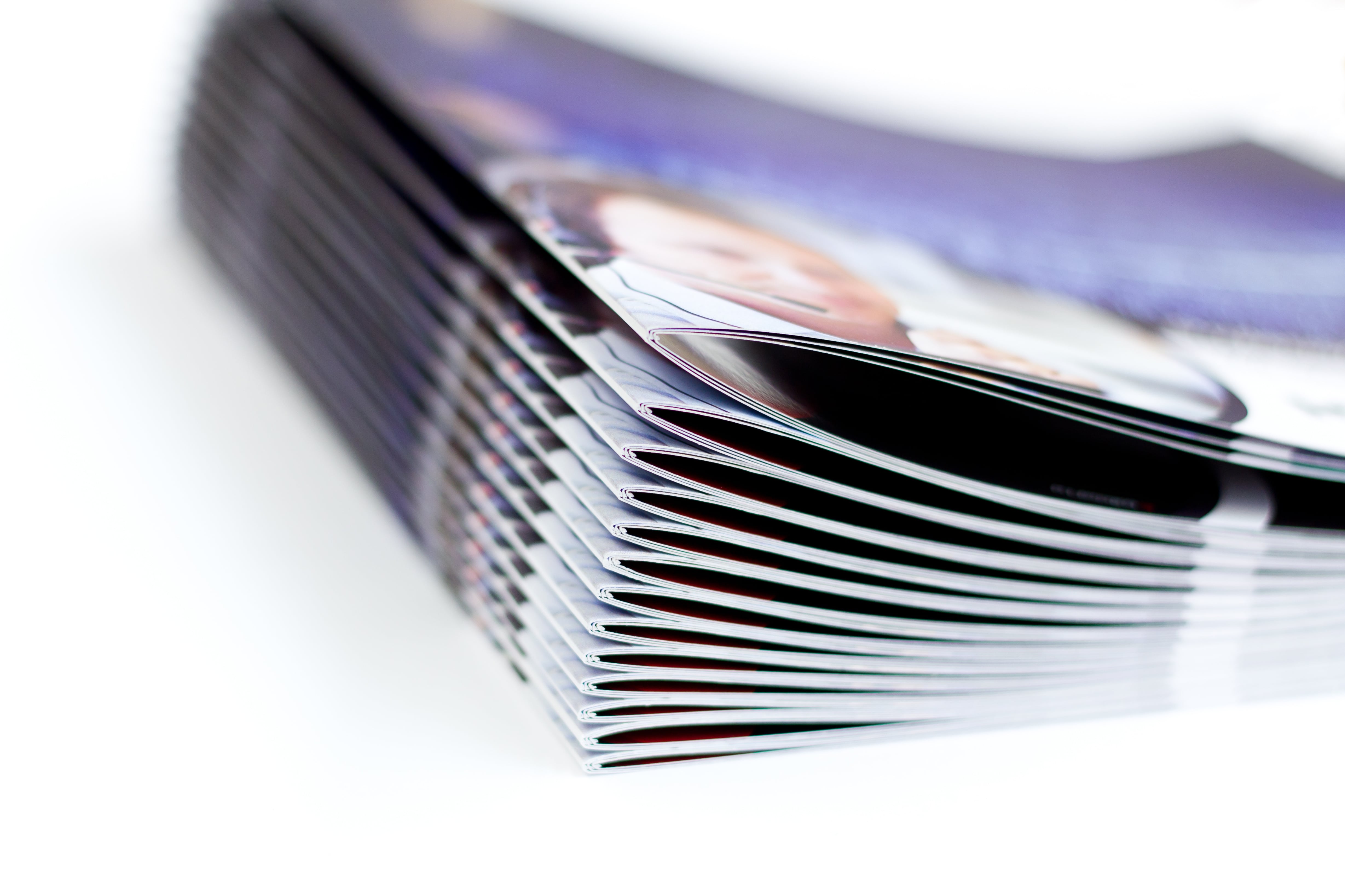The Necessary Overview to Recognizing Pamphlet Printing Options and Techniques
The procedure of brochure printing entails several considerations that can significantly impact the last item. From choosing the suitable format and dimension to comprehending the nuances of binding methods, each selection plays a necessary function. Additionally, variables such as paper supply and printing techniques more affect the effectiveness of the pamphlet. As one browses these options, it comes to be necessary to comprehend how they adjoin and what that implies for the overall result.
Understanding Pamphlet Styles and Dimensions
When thinking about booklet printing, comprehending the various styles and sizes offered is important for attaining the desired discussion. Booklets can be created in numerous formats, including saddle-stitched, spiral-bound, and perfect-bound, each offering distinctive advantages. Usual sizes vary from standard letter (8.5 x 11 inches) to smaller sized alternatives like A5 (5.8 x 8.3 inches), enabling adaptability based on material and target audience.Selecting the ideal size can influence both the format and reader interaction. Bigger sizes might fit aesthetically driven content, while smaller layouts might be much more user-friendly and portable. In addition, the variety of pages impacts the choice of binding technique, as thicker pamphlets might require stronger bindings. Inevitably, understanding these aspects permits a much more customized approach, guaranteeing that the end product straightens with the desired message and visual, enhancing the overall efficiency of the communication.
Selecting the Right Paper Supply

Binding Methods: Factors To Consider and options
When it concerns binding techniques for pamphlets, several choices are offered, each with distinctive benefits. Saddle stitch binding offers an economical remedy for thinner pamphlets, while perfect binding techniques offer an even more sleek seek thicker magazines. Wire-O binding stands out for its sturdiness and simplicity of usage, making it excellent for documents that require flexibility.
Saddle Stitch Binding
Saddle stitch binding provides a useful and economical remedy for constructing booklets, making it a prominent choice among companies and publishers. This binding method involves folding sheets of paper in fifty percent and stapling them along the fold line, developing a cool and well organized appearance. Usually appropriate for booklets with a reduced web page matter, saddle stitching is perfect for magazines, sales brochures, and educational products. The simplicity of this technique allows for fast production and is typically favored for brief runs or advertising products. Nevertheless, it is important to note that saddle stitch binding might not appropriate for thicker brochures, as the spine might not hold up under increased weight. In general, it continues to be a trusted choice for many printing tasks.
Perfect Binding Methods
Perfect binding is an extensively utilized technique that gives a expert and sleek surface to booklets and publications. This approach includes gluing the web pages together at the spinal column using a solid adhesive, allowing for a clean side and the ability to hold a bigger variety of pages contrasted to saddle stitching. Perfect binding is especially ideal for thicker booklets, such as magazines and annual reports, where a tough, flat spinal column is wanted. Furthermore, it supplies the option for a printed cover that can be made to enhance visual charm. However, considerations such as page matter, paper weight, and the intended use of the brochure need to be thought about, as they can impact longevity and overall high quality.
Wire-O Binding Choices
Wire-O binding, understood for its toughness and adaptability, offers an outstanding choice for brochures that need simple web page transforming and an expert look. This binding technique uses a collection of steel loopholes that hold pages securely, permitting them to lie flat when open. It is particularly appropriate for discussions, directories, and handbooks because of its robust nature. Wire-O binding is available in numerous shades and sizes, fitting different web page matters and thicknesses. Additionally, it allows the incorporation of tabs and covers, improving the booklet's general aesthetic. Factors to consider for Wire-O binding consist of the option of wire shade, the dimension of the loops, and the extent of modification preferred, all of which can profoundly affect the end product's appearance and functionality.
Digital vs. Offset Printing: Which Is Best for You?
When selecting a printing approach for brochures, understanding the distinctions between digital and counter printing is essential. Digital printing makes use of contemporary technology to generate premium prints quickly and cost effectively, making it optimal for short runs or jobs requiring fast turnaround times. It enables customization, giving the ability to publish on-demand with minimal waste.In comparison, offset printing is a typical method that masters producing huge quantities with constant top quality. It includes transferring ink from a plate to a rubber covering, after that to the paper, which results in lively colors and exact information. Nonetheless, offset printing commonly needs longer arrangement times and is more economical for bigger volumes.Ultimately, the choice between electronic and counter printing depends on job needs, budget, and desired amount. For tiny, time-sensitive projects, digital could be the very best option, while countered might be better for bigger, top quality productions.

Designing Your Brochure: Tips and Best Practices
When designing a pamphlet, mindful focus to design, font selection, and shade usage can considerably enhance its efficiency. A well-structured format overviews the visitor's eye, while appropriate fonts assure readability and communicate the desired tone. In addition, efficient use shade can stimulate emotions and emphasize crucial information, making the total style much more impactful.
Choosing the Right Design
How can one effectively pick the best layout for a brochure? It is important to review the booklet's function and target audience. A tidy, organized format improves readability and engagement. Using a grid system can aid in straightening elements continually, producing a specialist appearance. In addition, incorporating aesthetic hierarchy with differing sizes and positionings of images and text can lead the reader's eye and highlight key info. It is additionally important to leave adequate white room, which avoids congestion and enables better emphasis. Examining different layouts with mock-ups can supply understanding right into how the design carries out in real-world situations, making certain that the last item meets both aesthetic and functional demands. Practical Picking Ideal Typefaces
An appropriate typeface can greatly enhance the overall design of a booklet, complementing the layout and reinforcing the Look At This content's message. The selection of fonts should consider readability, especially for body text, as it guarantees the details is accessible to all readers. Sans-serif typefaces are often preferred for electronic layouts, while serif font styles can provide a conventional feel in printed materials. It's a good idea to limit font options to two or 3 to preserve aesthetic coherence. Additionally, font style size plays a vital role; headings ought to be unique but not frustrating, while body message need to fit for reading. When picking fonts, alignment with the pamphlet's motif and target market is vital for effective interaction and aesthetic charm.
Effective Use Color
Shade acts as an effective device in pamphlet design, forming understandings and directing reader emotions. It can evoke feelings of peace, count on, or excitement, depending on the tones chosen. Developers need to consider color theory principles, making certain that the selected palette lines up with the brochure's message and target market. Making use of cozy colors like red and orange can create urgency, while cooler tones like blue and environment-friendly foster tranquility.Additionally, comparison plays a vital role; complementary colors can improve readability and aesthetic charm. Uniformity in shade use throughout web pages better reinforces brand name identity and cohesion. Ultimately, effective color implementation not only catches focus yet additionally enhances the pamphlet's objective, making it an essential element of effective design.
Finishing Touches: Coatings and Special Effects
While many take into consideration the web content and format of a pamphlet one of the most important aspects, the completing touches, such as finishings and unique impacts, play a necessary function in improving its overall appeal. Coatings can provide security and sturdiness, guaranteeing that the booklet withstands damage. Matte finishes offer an innovative, non-reflective surface area, while glossy coatings can make shades appear more dynamic and attractive. Special effects, like embossing or aluminum foil marking, include a tactile measurement that can produce a memorable impact. These techniques can highlight certain areas, attracting interest to vital info or creating aesthetic interest. Additionally, UV finishing can supply a high-shine finish that elevates the total look.Together, these completing touches not just improve the pamphlet's aesthetic but additionally interact professionalism and reliability and focus to detail, inevitably leaving a long lasting influence on the reader.
Price Considerations for Brochure Printing
Recognizing the different price considerations for pamphlet printing is necessary for companies and companies aiming to maximize their budget plans. Trick elements affecting prices include the choice of paper, ink, and binding techniques. Better materials, such as superior paper or specialized inks, normally increase the overall cost. Additionally, the size and web page matter of the pamphlet play a substantial role; bigger pamphlets require more resources and time to produce.Another vital consideration is the printing strategy, whether electronic or countered, as each has its very own rates framework and viability for various amounts. Businesses should also factor in design prices, which can differ based upon intricacy and making use of specialist solutions. Inevitably, delivery and handling click here for more info charges can include in the overall, particularly for big orders. By evaluating these elements, organizations can make enlightened choices that straighten with their economic abilities while achieving the desired quality in their published products.
Often Asked Concerns
What Are the Environmental Effects of Brochure Printing?
The environmental impacts of booklet printing consist of logging from paper production, carbon discharges from transport, and waste generation from thrown out products - Booklet Printing. Sustainable practices, such as making use of recycled paper and green inks, can alleviate these impacts
How Can I Make Sure Shade Accuracy in My Pamphlet?
To ensure color precision in a brochure, one must use calibrated monitors, use expert shade accounts, conduct test prints, and pick high-grade printing services that offer shade matching and proofing options for ideal outcomes.
What Is the Normal Turnaround Time for Pamphlet Printing?
The common turn-around time for brochure printing differs relying on the complexity and amount - Booklet Printing. Typically, it varies from a few days to 2 weeks, influenced by factors such as publishing methods and ending up demands
Exist Minimum Order Quantities for Booklet Printing?

Can I Publish Booklets in Several Languages?
Printing brochures in numerous languages is feasible. Several printing services offer options for multilingual or bilingual designs, enabling reliable interaction. Mindful preparation warranties that design elements wikipedia reference accommodate various languages without compromising readability or aesthetic appeals. Furthermore, aspects such as paper supply and printing methods additional influence the efficiency of the brochure. When thinking about brochure printing, understanding the various formats and sizes readily available is essential for achieving the desired discussion. When picking a printing technique for brochures, comprehending the differences in between electronic and balance out printing is vital. Additionally, the size and web page matter of the pamphlet play a significant duty; bigger brochures require even more resources and time to produce.Another essential consideration is the printing strategy, whether digital or offset, as each has its very own prices structure and viability for various quantities. The ecological effects of booklet printing consist of deforestation from paper production, carbon exhausts from transportation, and waste generation from discarded products.